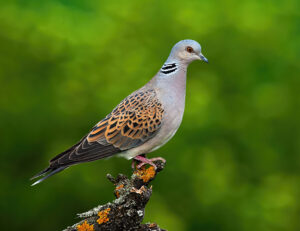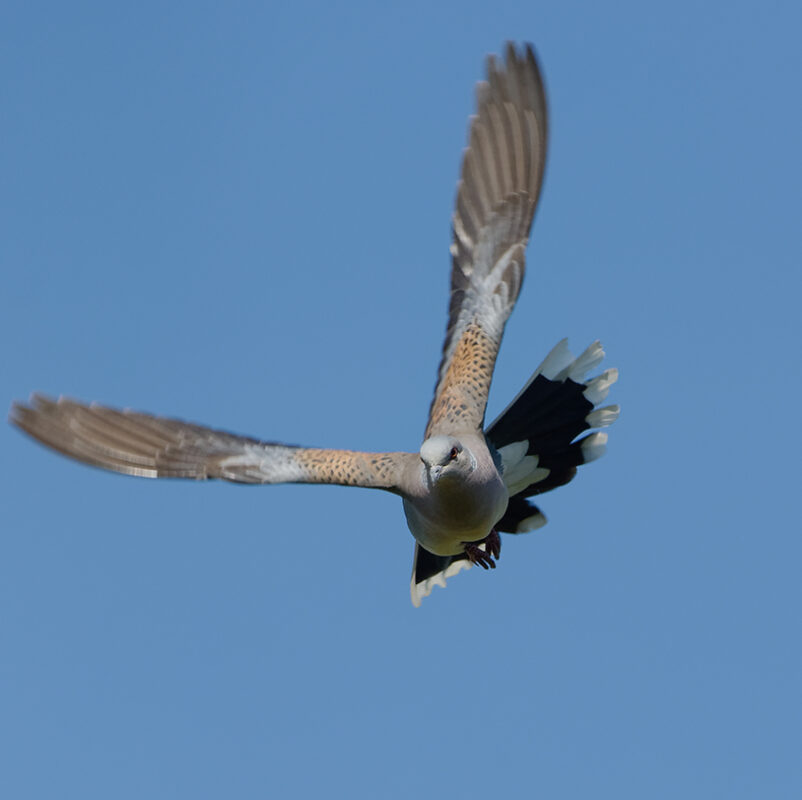The results of this study reveal that more juvenile turtle doves are hunted than adults, especially at the beginning of the hunting season.
For the first time, data on the number of turtle doves killed or wounded but not collected have been estimated, indicating that the number of individuals hunted has been underestimated by 9.6%
The results of the study provide important empirical data for the evaluation of the sustainability of turtle dove hunting and for the design of the adaptive hunting management plan for the species.
According to a study published in open access in the journal Science of the Total Environment in which researchers from the Forest Science and Technology Center of Catalonia (CTFC), the Institute for Research in Hunting Resources (IREC-CSIC), the University of Extremadura and the Royal Society for the Protection of Birds (RSPB/Birdlife, UK), the parameters used by the administration to regulate the hunting of the European turtle dove are not sufficient to prevent the decline of the species.
In 2018 the European Commission developed an Action Plan for the conservation of the European turtle dove since the populations of this bird are declining in Europe. With a 37% decrease in the population of Streptopelia turtur between 1996 and 2018, Spain is the Western European country where the most turtle doves are hunted, with an average of 950,000 per year between 2006 and 2017. Thanks to the collaboration of hunting associations, the researchers have monitored turtle dove hunts in hunting grounds in Catalonia, Andalusia, Castilla la Mancha, and Extremadura to collect data to improve the cynegetic management of the species.

Streptopelia turtur.
Between 2015 and 2019, prior to the hunting moratorium issued by the European Union, researchers collected hunting data at the preserve level to estimate the proportion of turtle doves killed or injured but not collected, known as crippling losses, a parameter unknown for turtle doves and therefore not included in the official hunting statistics. The study shows that the mortality derived from hunting is underestimated by at least 9.6%, which implies that for the last years when it was allowed to hunt the bird, around 90.000 individuals were hunted but not recorded. “The proportion of individuals injured but not recovered is a key piece of information, which is not included in the official hunting records, but which obviously should be computed for population purposes of the species,” stresses Lara Moreno-Zarate, a researcher in the group of Conservation Biology at the CTFC and the IREC-CSIC, and first author of the article.
The data collected shows that the number of turtle doves shot increases as more hunters are present during the hunt – a fact that may seem intuitive, but which had not been recorded until now. “Thanks to this study we know that the number of hunters is a crucial factor in order to control the number of turtle doves that are hunted. However, this variable is not regulated by the administration, which does regulate other parameters,” explains Moreno-Zarate.
The researchers also observed that a higher proportion of juveniles than adults are hunted, especially at the beginning of the season – the time with the highest concentration of hunted turtle doves. In fact, the proportion of young individuals hunted is higher than expected at random, indicating a greater pressure and vulnerability to hunting mortality of this age group when compared to adults. This imbalance between the hunting bags and the population structure of turtle doves should be considered in future demographic models of the species. Other studies highlight that the survival of juveniles is a critical parameter for the population viability of the species, so these results will help to improve and reduce the uncertainty of these key demographic models for decision-making in relation to adaptive hunting management.
This study provides information with the potential to help improve game management of the turtle dove through the European Adaptive Hunting Management Plan (AHM) – an efficient tool for the management of game species based on a scientific decision-making process. “Together with national administrations and hunting federations, we are evaluating how to implement the adaptive hunting management plan at national and regional scales. The new data will allow for better decision-making and thus help to plan a cynegetic use that does not compromise the recovery of the species,” indicates Beatriz Arroyo, IREC-CSIC researcher and scientific coordinator of the EU Adaptive Hunting Management Plan.
The study concludes that, in order to allow for sustainable cynegetic management of the species, the administrations, beyond regulating the days and duration of the hunting season, should regulate more parameters, such as the number of hunters per preserve or the hunting method, among others.
Further information:
Lara Moreno-Zarate, Beatriz Arroyo, Francesc Sardà-Palomera, Gregorio Rocha, Gerard Bota, Will J. Peach. Age ratio, crippling losses and factors affecting daily hunting bags of European Turtle-dove in Spain: Implications for sustainable harvest management of a declining migratory species. Science of The Total Environment (2023) Volume 868, 161192 DOI: 10.1016/j.scitotenv.2022.161192
Last modified: 21 June 2023










